MARIANI’S
Virtual Gourmet
April
26, 2015
NEWSLETTER
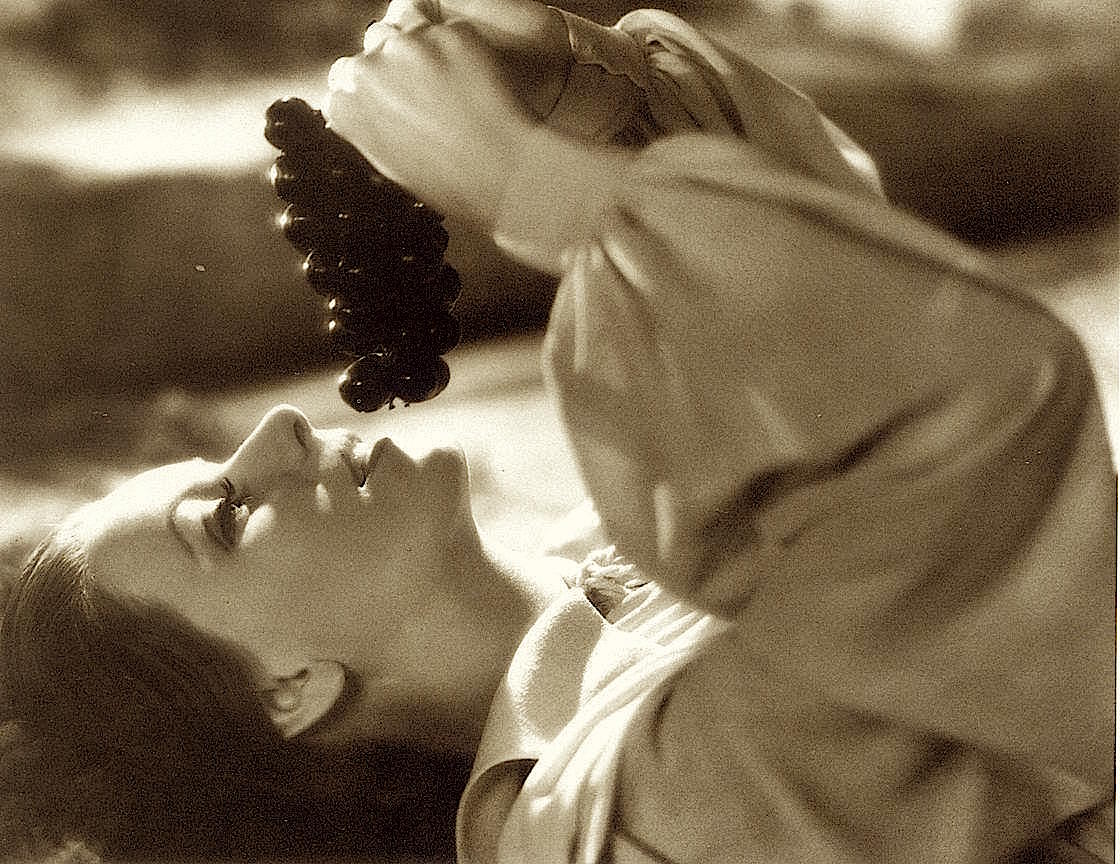
Greta
Garbo in "Queen Christina" (1933)
IN THIS ISSUE
CANCUN AND THE
YUCATAN COAST
by Marcy MacDonald
NEW YORK CORNER
RED EYE GRILL
By John Mariani
❖❖❖
CANCUN AND THE
YUCATAN COAST
by Marcy MacDonald
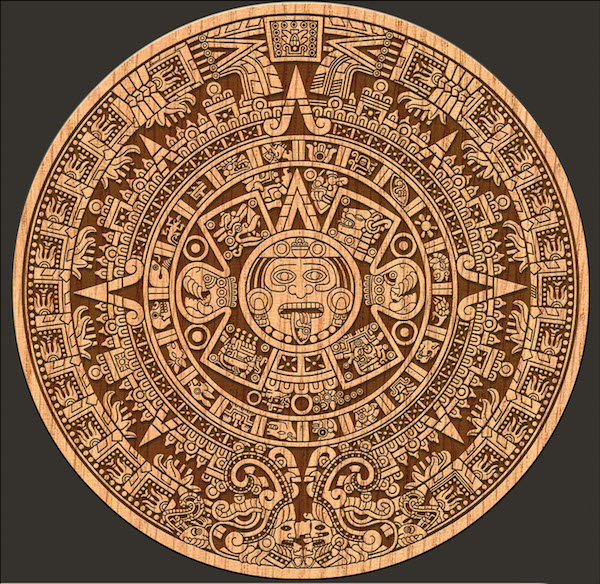
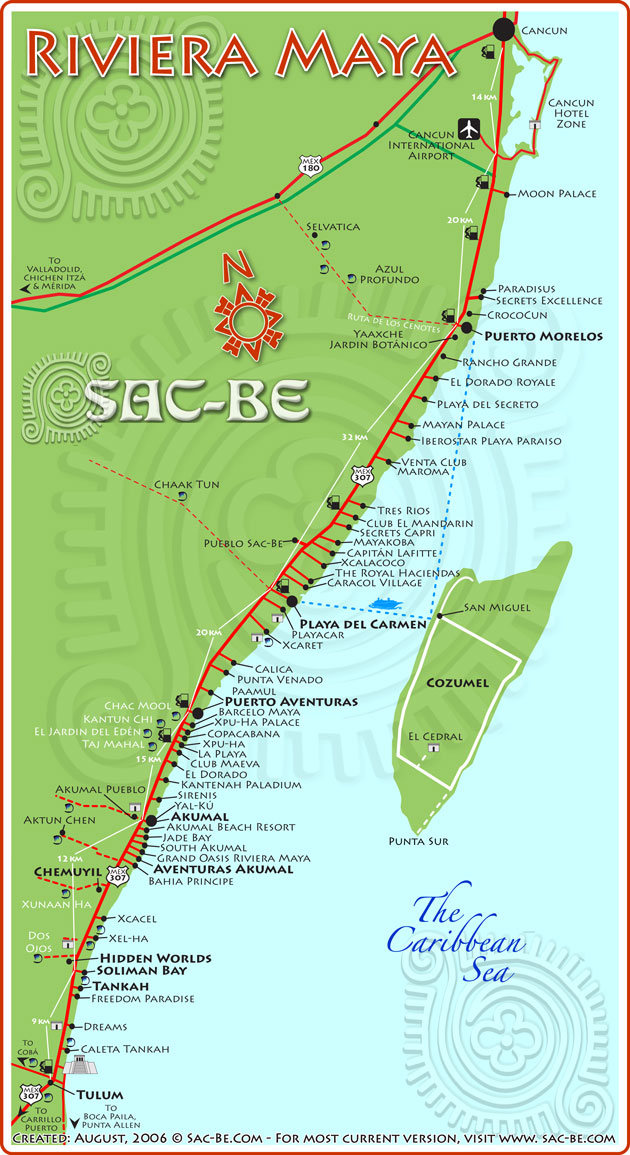 When
15th century Conquistadores sailed into Cozumel
island off the eastern tip of the Yucatan Peninsula,
they were within spyglass distance of the clifftop
fortress of Tulum, one of the last city-states of
the Maya people. Today, Tulum is at
the epicenter of the Riviera Mayan foodie
revolution, and Cozumel is an off-shore runner-up,
particularly for traditional Yucatecon food and
sophisticated international classics. The near-desert
peninsula, which became a tourist mecca by design in
the late 1970s, is a great place to jet ski,
snorkel, scuba dive, swim, sail, ride horses, speed
down a jungle zip line, or take one of the
hundreds of tours to nearby modern beaches and
faraway ancient archeological sites.
When
15th century Conquistadores sailed into Cozumel
island off the eastern tip of the Yucatan Peninsula,
they were within spyglass distance of the clifftop
fortress of Tulum, one of the last city-states of
the Maya people. Today, Tulum is at
the epicenter of the Riviera Mayan foodie
revolution, and Cozumel is an off-shore runner-up,
particularly for traditional Yucatecon food and
sophisticated international classics. The near-desert
peninsula, which became a tourist mecca by design in
the late 1970s, is a great place to jet ski,
snorkel, scuba dive, swim, sail, ride horses, speed
down a jungle zip line, or take one of the
hundreds of tours to nearby modern beaches and
faraway ancient archeological sites.
There are beaches galore,
some natural, most part of a $70 million recovery
project, although some of the man-made beaches feel
a little like white sand sprinkled over
cement. Stick to the north end of any beach for
REAL beach (as opposed to the man-made dust
jobs). The relatively calm waters of the
Nichupte lagoon boast water toys and games.
Hotels range from the only nudist resort on
the beach, the Hidden Beach Resort
au Naturel Club, which has 42
rooms, to the fully clothed El Dorado Maroma
Beachfront Resort, which has 72
suites and gourmet cuisine. There are all-inclusive,
spa-centric resorts like Grand
Velas (below) further along the
Caribbean. Restaurante
Frida in the Grand Velas features a modern
take on ancient Mayan delicacies complemented by
more than 85 brands of tequila. You can even sample
a tasteful $1,000 Tequilas Premium Clase Azul
popsicle with gold flakes. At Grand Velas, tequila
is practically served as a kind of health
drink. The hot CoCo Bongo is the place to be seen
— you and 3,000 other revelers — and the exclusive Bling is open
after 6 p.m. Try the terrace bar and some
sushi. 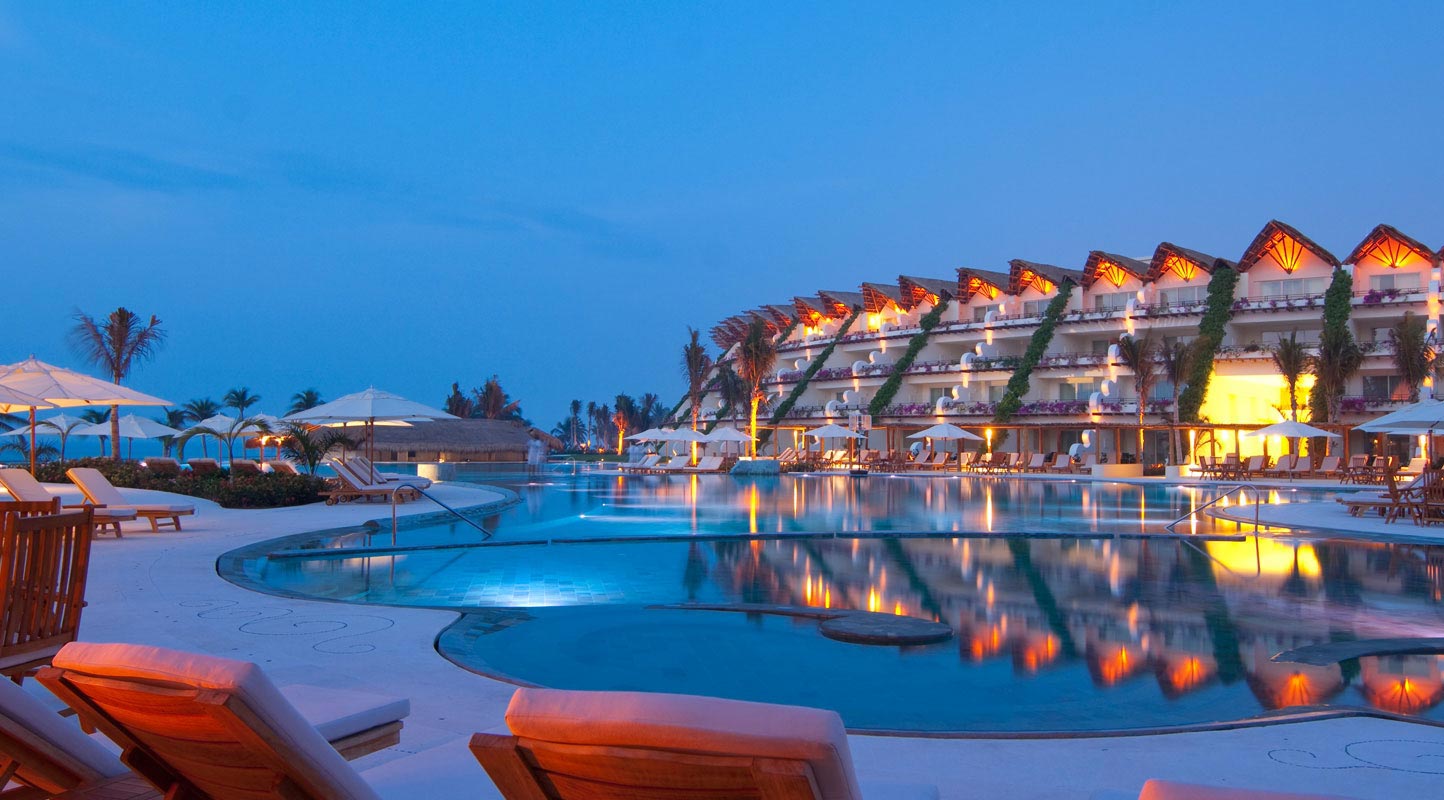
If
you're unclear about what to expect, remember that
the 'all-inclusive' resorts have come a long, long
way since they specialized in "hot-and-a-lot"
cuisine and watered down drinks. As a
paradigm, take a close look at Sandos,
the very loose chain of high-quality Spanish resorts
that seem to have covered every base on the 'real'
Mayan experience -- or as real as it can be away
from the 15th century.
As I
flew over the peninsula, it was obvious that things
had changed greatly since the 1970s, when Sheraton's
big, beautiful resort had big, beautiful rubber
buckets catching rainwater dripping from the high
ceiling onto the luxurious, highly polished stone
onyx floor. I had considered the importation
of the all-inclusive resort idea to this once-virgin
part of the world to be be a huge mistake. No
longer. The bright coastal water is the same
piercing turquoise, the beaches that impossible
white that makes teeth look dull by comparison, and
the peninsula is now a greenbelt destination for
ecologists worldwide.
Yucatan is literally lined with resorts and
the businesses that thrive on them, both "duty free"
and almost free. Just nine miles (and about as
many minutes) from Cancun airport, the Sandos
Luxury Experience Resort stands tall --
they're all tall
-- at the water's edge.
When Sandos resorts invited me to the
Yucatan, I jumped at the chance to return to Mexico. Our
family had lived, however briefly, in Guadalajara
when my father and Uncle Charlie had a factory there
that produced Charlie's inventions, which never
earned either of them a peso before they went
broke. Still, it developed in me a taste for
Mexican food, including several kinds of explosive
hot sauces, drink and celebrations. Tequila,
the product of blue agave, was born in Guadalajara,
so at least that introduction wasn't necessary on
this trip. Today, there are hundreds of
tequila and mezcal celebrations throughout the
Yucatan, announced regularly in many of the 13 daily
newspapers on the peninsula.
 Naturally, upon arrival at Sandos, we were handed a
glass of something tropical and tasty and brought by
elevator to the Club level of the resort while
luggage was distributed to our enormous rooms (above)--mine
was the size of a mini bowling alley. Checking
in was painless as not only do the hotelistas
register you and encourage you to try all of the
small plates of food surrounding you, Club rules
seem to include alcohol throughout most of the
waking hours. Room service is available around the
clock with an international menu that includes
everything from Mexican cheeses to cold -- and hot
-- cuts of meat.
Naturally, upon arrival at Sandos, we were handed a
glass of something tropical and tasty and brought by
elevator to the Club level of the resort while
luggage was distributed to our enormous rooms (above)--mine
was the size of a mini bowling alley. Checking
in was painless as not only do the hotelistas
register you and encourage you to try all of the
small plates of food surrounding you, Club rules
seem to include alcohol throughout most of the
waking hours. Room service is available around the
clock with an international menu that includes
everything from Mexican cheeses to cold -- and hot
-- cuts of meat.
We were wined and dined that evening at St. Trop (below), one of
the resort's outdoor oceanside restaurants, where
every nationality of food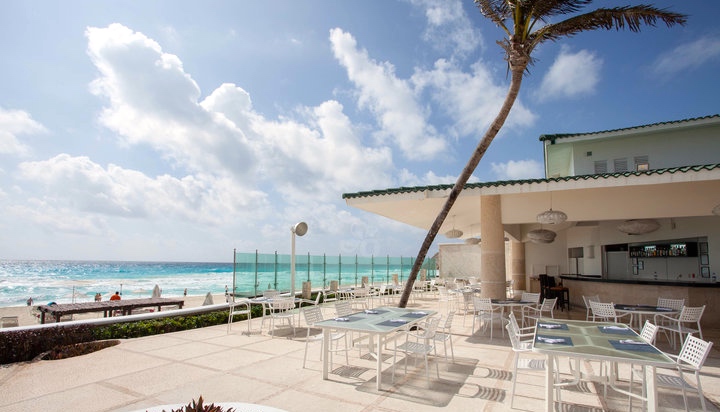 is ready
and waiting. A band played everything from the
blues to "La Bamba." Preambles to spa treatments
include drinks in St.
Trop (right),
where a variety of tequilas and margaritas taste as
genuine as those at Tequila Central, aka:
Guadalajara. Cerveza flows from spigots and
cans. Waiters soon weigh the table down with
samples of everything on the menu.
is ready
and waiting. A band played everything from the
blues to "La Bamba." Preambles to spa treatments
include drinks in St.
Trop (right),
where a variety of tequilas and margaritas taste as
genuine as those at Tequila Central, aka:
Guadalajara. Cerveza flows from spigots and
cans. Waiters soon weigh the table down with
samples of everything on the menu.
At
lunch the next day that amazing sea dazzled the eye
and lapped against the shore while a band played
tunes ranging from Broadway to Badass, beebop and
"La Bamba." The lunch menu offered a variety
of snacks, salads, sandwiches and pizza (try the
prawn pizza for a nice, new, not rubbery taste)
selections, all in sizes ranging from 'bite-size" to
"monster." Expertly mixed frozen cocktails with
fresh fruit juices (the strawberry margarita went
down like a smoothie), beers (XX is a favorite among
visiting Southern Californians), and assorted drinks
(the right temperature but not the right accent for
a gin and tonic) were served by waiters who didn't
seem to expect the tip we left.
If I'd had a doggie bag, I would have used it
just to collect the remains of the chicken and
habanero (pow!
zoom!) quesadilla and a couple of the nice,
rolled up little non-greasy pork taquitos and
fresh guacamole
in case a midnight snack was required. But
the Sandos staff had other thoughts. A tap on the
shoulder reminded me that a 90-minute Spa
appointment had been booked, beginning in about five
minutes.
As I headed into the Spa, I felt as if I
should be banging a tambourine or doing the twerk as
I passed the musicians. As the fragrance of
hibiscus overwhelmed me at the thick glass door, I
floated into the women's locker room. Spa
Master Erika Lara welcomed me and took my
medical/esoteric history.
Once the spa door had closed, the outdoor
sounds became inaudible enough to hear inner peace
trickling in. A quick shower and wrap in a
bathrobe so thick I practically bounced when I went
for a little read in the waiting room with a glass
of cooling hibiscus tea that went straight to my
head. I was about to do the sensible thing --
nod off -- when Theresa, the tiniest Mayan woman
with the biggest hands I'd ever seen, called my
name. The Spa mistress already had a long list of my
ailments and she and the masseuse chatted in dialect
as I finished reading about an upcoming U.N. meeting
on conservation just down the coast. For an
hour and a half this tiny woman solved the problems
of my universe. Sciatica: temporarily
painless. Torn rotator cuff: newly relaxed and
loosened. Her touch was so true that she
practically massaged me under my 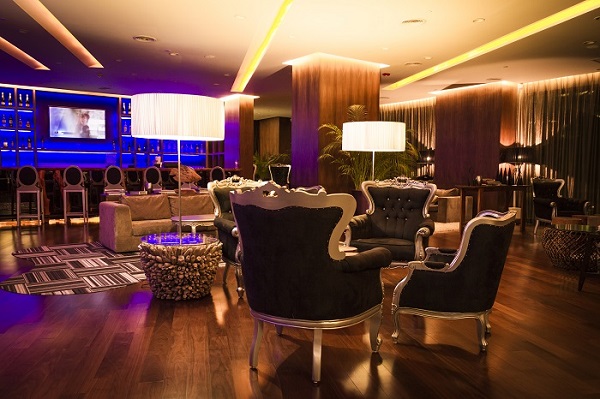 vertibrae to
ease the nerve pain. At the end of it, I
willingly tipped her 20% of the bill and would have
tipped more if I'd been intelligent enough to bring
more cash, but in a cashless society, one does what
the cashless do. We recuperated in another
room with hibiscus tea and strawberries dipped in
dark, dark chocolate -- an ideal healthful food from
the people who invented chocolate centuries before
they devised a written language.
vertibrae to
ease the nerve pain. At the end of it, I
willingly tipped her 20% of the bill and would have
tipped more if I'd been intelligent enough to bring
more cash, but in a cashless society, one does what
the cashless do. We recuperated in another
room with hibiscus tea and strawberries dipped in
dark, dark chocolate -- an ideal healthful food from
the people who invented chocolate centuries before
they devised a written language.
Ready for a
nap, I dressed for dinner instead, and met the other
suddenly healthy revelers for experimental,
molecular drinks upstairs in the Club Bar (left), where
Manager Julio described how the barristos
arrived at their presentations, from Sergio's
Watermelon Manhattan to a Coconut Cream and
beyond. Ordinary guests find the intimate
lobby bar, Bar One, presents much the same in a glam
and cozy atmosphere surrounded by contemporary art
and late night musical entertainment. But up
in the Club, we, the chosen few, begin to try a wide
range of beverages surrounded by other Club members,
just as surprised as we were at the
concoctions. Those who have sampled molecular
food (invented by the most famous chef in Madrid and
duplicated by the French chef at Sandos) either love
or hate combos like frozen foie gras coated in dark
chocolate and dripping with calories. Fascinating
combinations constantly being reworked.
INTO THE JUNGLE: THE ECO RESORT COMES OF AGE
If you
actually want to experience something of the Yucatan
that isn't just on a day trip (and doesn't include
dropping a single star from your five-star resort),
consider Sandos' all-inclusive in the jungle: the
Caracol
Eco-Experience Resort (below)in the
province of Quintana Roo, en route to Playa del
Carmen. The key is the location. This is
far beyond a well-organized, vertical Spa
experience, but a real slice of the jungle at the
water's edge, safe enough for the weakest links in
the family or extended family.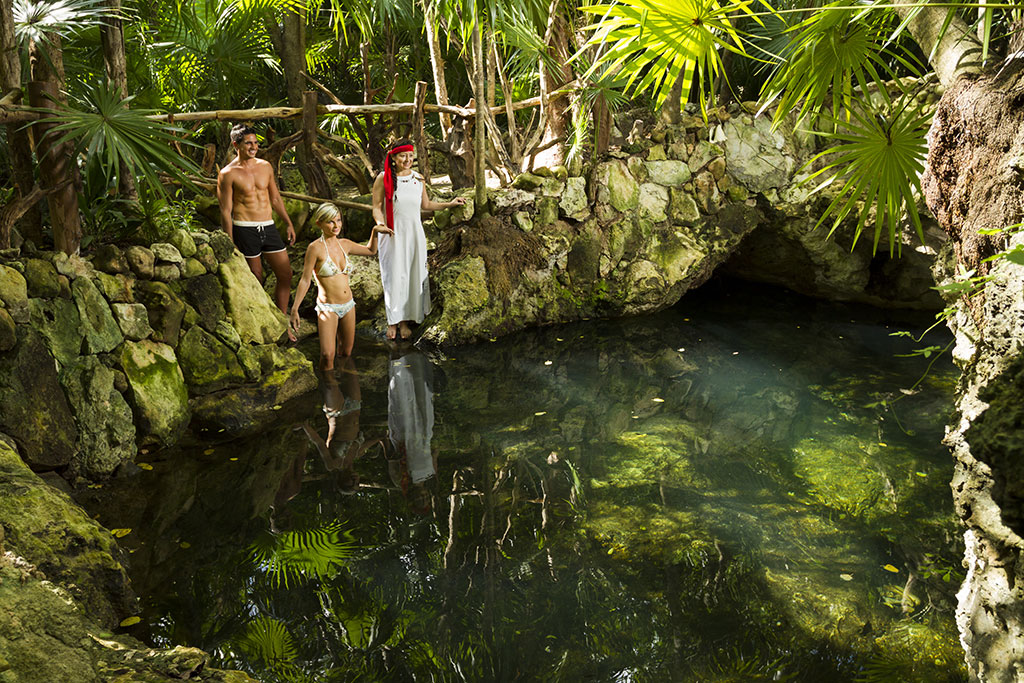
What makes this an Eco-Resort is that they're
actually working with the environment to innovate
and improve their footprint in the jungle (check
with the United Nations to see when they plan
another visit to the Yucatan in their sustainability
efforts).
There were ancient Mayan altars set up with
special food displays (see photos and recipes) of
authentic Yucatecan delights. Demonstrations of
preparation and food sampling extends to tours of
the various kitchens; these chefs demonstrate
everything from ice and vegetable carving to
preparing special cuisine that will never taste
quite right north of the border.
The Sandos Caracol Eco Experience is a very,
very green experience. In the resort's effort to
reduce their ecological footprint, they attempt to
promote sustainable practices among guests and
suppliers. They practice water and electrical
energy conservation and operate a wastewater
treatment plant. They compost, and produce
substrate for their Mayan garden ("Ka 'anche") to
cultivate medicinal plants and vegetables (like the
Mayan medicinal and mythological trees, the ceiba,
chaca and chechen). Indeed, they have an
onsite nursery that features reproduction programs
for palm trees and endangered species. Ninety-nine
of the rooms are deemed 'green' rooms and feature
furniture of certified local wood, solar panels,
high efficiency air conditioning, LED lighting, and
water recycling. Their guest transport system
is powered by solar panels. They've even
received an award from the Rainforest Alliance.
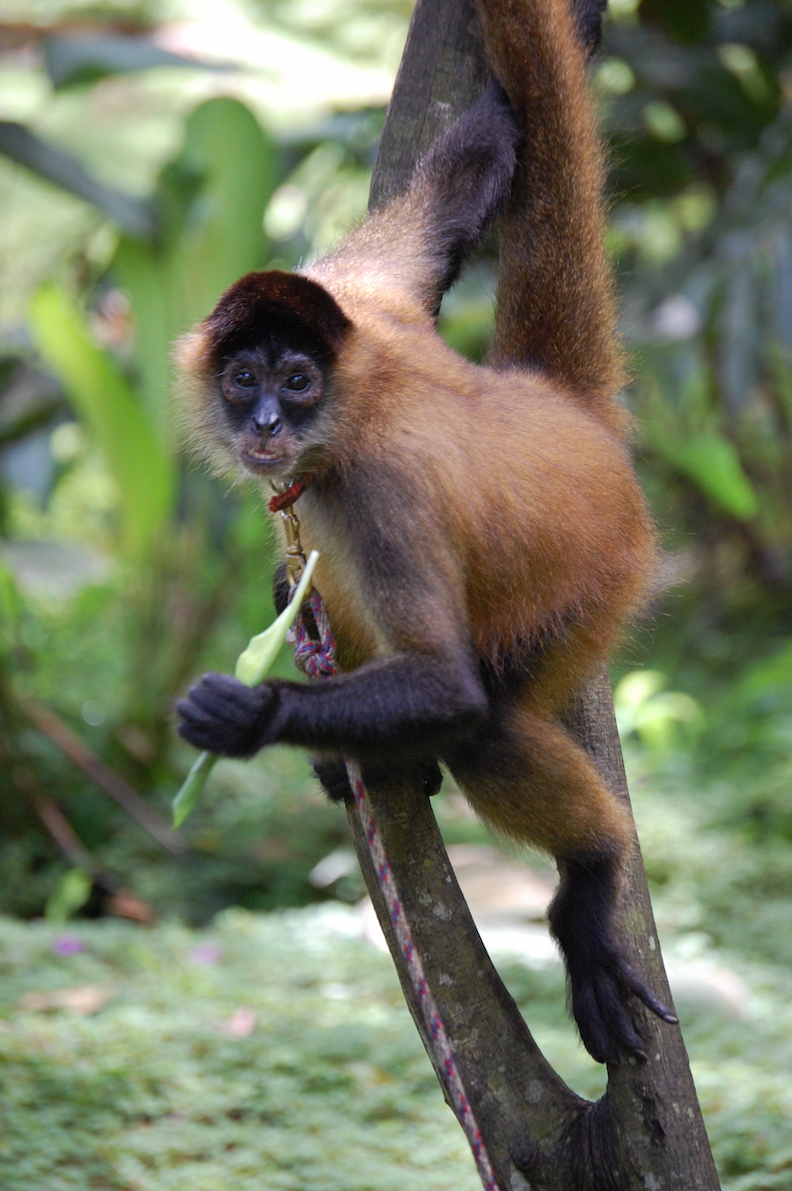 There
are more than 60 species of mammals, birds,
reptiles, et al. Signs everywhere warn
revelers not to feed the monkeys or the ducks on the
properties. There's even a Cat Cafe. One
morning ducks found a way out of their enclosure,
next to the deer enclosure, and marched to
breakfast, where one actually wagged its tail at
diners, who are ever tempted to feed them everything
from brioche to bacon.
There
are more than 60 species of mammals, birds,
reptiles, et al. Signs everywhere warn
revelers not to feed the monkeys or the ducks on the
properties. There's even a Cat Cafe. One
morning ducks found a way out of their enclosure,
next to the deer enclosure, and marched to
breakfast, where one actually wagged its tail at
diners, who are ever tempted to feed them everything
from brioche to bacon.
Monkeys
now
have their own charity on the Yucatan Peninsula: Con
Mono Maya, which identifies existing populations,
works with stakeholder to maintain their habitats
and to educate the populace (particularly children
and well-meaning, but destructive tourists) about
the plight of monkeys and their importance in the
ecosystem, as well as to support human communities
that come into conflict with wild monkey
populations, principally the primates Geoffroy's
spider monkey (left)
and the black howler monkey. Vets on the
premises tend to all of the animals, feral and
domesticated.
There are so many different taste treats --
from Las Mascaras
Mexican restaurant (very foreign) to the Riviera, a
Mediterranean restaurant perched on the coast.
The Moko Mori Art (below)
is food art. Don't miss the shrimp with strawberries
before you move on to the rest of the Mayan Riviera
and the Sandos property Argentinians prefer: the
Playa Car, heading towards Playa Carmen. You
start realizing that the reason you recognize the
staff at a Sandos resort is that they appear in the
resort advertising, so the chef you see in the ad is
the one you see cooking in front of you. They
even have their own version of the Cat Cafe and a
selection of wines from the Médoc, to make their
South American cousins feel at home. 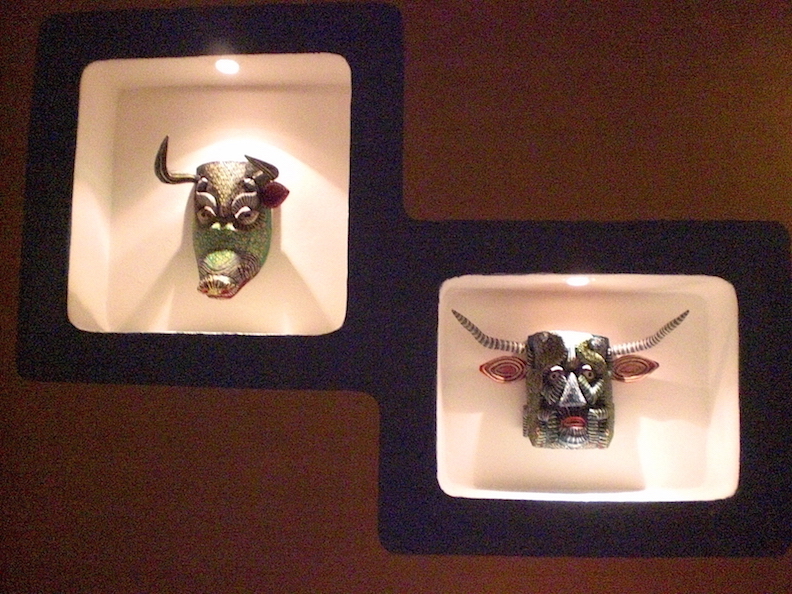 Chef Vincent conjures
up a tuna tartare, followed by sprouted okra, a
portobello, coconut, a black truffle and toasted
'ashes'. The kitchen tour shows the place to
be extraordinarily clean, and a cooking lesson is de
rigeur.
Chef Vincent conjures
up a tuna tartare, followed by sprouted okra, a
portobello, coconut, a black truffle and toasted
'ashes'. The kitchen tour shows the place to
be extraordinarily clean, and a cooking lesson is de
rigeur.
Love the place? Want to
stay? Head for the third of Sandos'
properties, Playacar
near one of the world’s best reef-dive
sites. A high reef off the shore
provides a beautiful underwater landscape.
Years ago, the Mexican Navy blasted a hole in the
reef around Cozumel so that cruise ships could have
easy access to both Cozumel and Cancun. When
it was discovered that this effort had helped kill
the reef, the Navy sank three old warships to begin
a new reef and re-plant it with corals.
This is the picture postcard shot the United
Nations sought for their eco conference. Make
room for purple cactus (medicinal); chicle (don't
chew in public); the totopas that aren't tortillas;
the ceiba tree of life, and the Ixtabai living
within the tree -- all are at the heart of "the land
of the remembered" in the Yucatan.
❖❖❖
NEW YORK CORNER
By John Mariani
 Redeye
Grill
Redeye
Grill880 Seventh Avenue
212-541-9000
redeyegrill.com/home
Monday
night in New York. Most Broadway shows are
dark. People don’t go out that much after the
weekend. A lot of restaurants take the day off.
But, this being NYC, many don’t and most of them
do great business on the first day of the week.
Take Redeye Grill, opened 20
years ago, which almost always has a crowd; which
is even more impressive when you see the size of
the place. The main dining room is built around a
very lively bar with a shellfish display, and its
signature item of décor is a revolving copper
sculpture of
“dancing shrimp” above the entrance. An
88-foot mural by artist Red Grooms wraps around
the room with scenes from both NYC and California,
whose food styles are evident on the menu. There
is live entertainment in Red’s Lounge. The
Living Room is marked with eight paintings by Mark
Kostabi. There
are also five private dining rooms.
The whole place is designed to dazzle you,
for the first time or the tenth. Restaurateur
Shelly Fireman of the Fireman Hospitality Group,
which also operates Café Fiorello, two Brooklyn Diners, Bond
45, and Trattoria
dell’Arte, has a knack for not just
giving people what they want to eat but to do so
in an environment that is always fun and always
tied to nearby entertainment venues, such as
Carnegie Hall,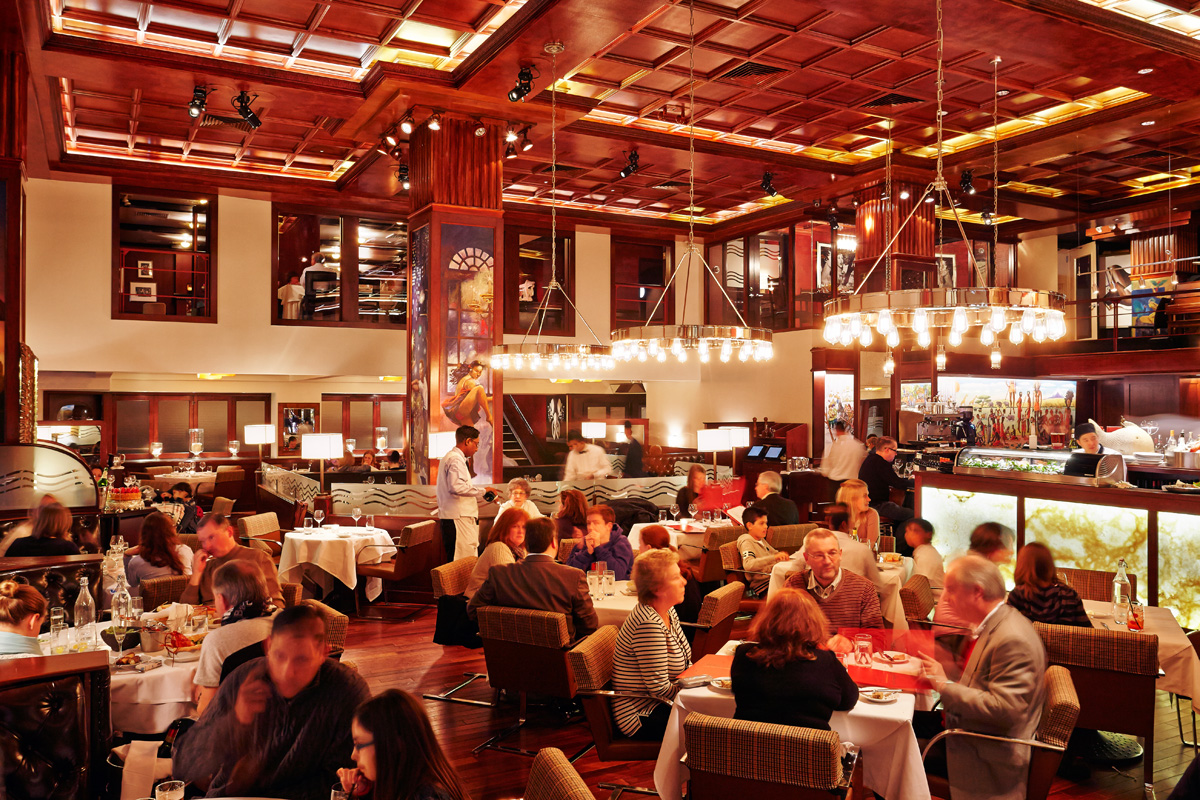 the Theater District
and Lincoln Center.
Visitors staying in midtown hotels may
already know of the restaurants from guidebooks
but will undoubtedly hear about them from the
concierges, who get consistently good feedback
from guests.
the Theater District
and Lincoln Center.
Visitors staying in midtown hotels may
already know of the restaurants from guidebooks
but will undoubtedly hear about them from the
concierges, who get consistently good feedback
from guests.
Corporate Executive Chef Brando
de Oliveira has long experience in top
international restaurants like Milan's Antica Osteria del
Ponte and Charles Palmer’s Aureole in
NYC. The on-premises exec chef is Jawn Chasteen,
and he’s canny about timing his cooking with the
service staff
because he knows he’s got a hungry crowd
out there.
The size of the menu is
commensurate with the size of the restaurant, from
New England clam chowder ($14) to sushi, from very
good guacamole ($22) to true--though very
expensive--veal schnitzel à la Holstein ($58),
with a fried egg on top of its crisp, buttery
crust. Also
crispy is a salad of burrata cheese and heirloom
tomatoes ($20).
Of
course, the shellfish here is a main draws, as
much for their abundance as for their array.
Oysters come in daily varieties, Alaskan King crab
legs ($35) are big and meaty, and tuna and avocado
carpaccio ($23) is excellent. The
jumbo lump crab cakes get a shot of chile aïoli
($22). 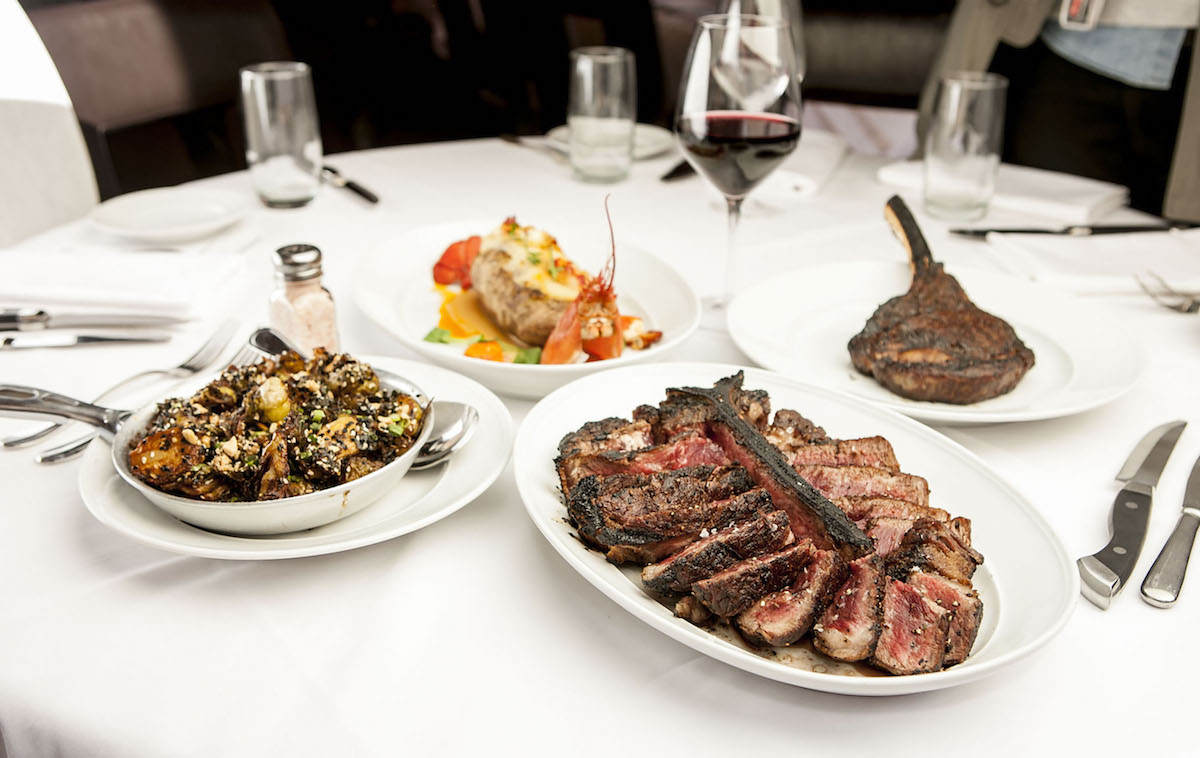 You may go
for the yellowtail jalapeño sashimi plate, but I
urge you to try the Okinawa sushi—shrimp, blue
crab, tuna, lobster or mushroom tempura rice and
sautéed in a ginger-chile sauce served over warm
super-premium tamaniski
rice ($19-$29).
You may go
for the yellowtail jalapeño sashimi plate, but I
urge you to try the Okinawa sushi—shrimp, blue
crab, tuna, lobster or mushroom tempura rice and
sautéed in a ginger-chile sauce served over warm
super-premium tamaniski
rice ($19-$29).
The Dover sole (market price) here
is one of the best in the city—very well fatted,
impeccably juicy, and served with a toasted almond
beurre blanc. After such wonderful seafood,
you might treat yourself to one of the fine steaks
here, which are dry-aged for 28 days and carved in
house. They
are first-rate, especially the superb bone-in New
York strip ($57) weighing in at 16 ounces. (Have
you noticed that the once standard one-pound strip
steak has been shrinking down to 14 ounces around
town?) Steak
toppings offer an aged Gorgonzola and a
good-to-see-again green peppercorn sauce.
Side dishes are generous, from
servings of Brussels sprouts to a one-pound baked
potato (below)
that our table of three could not finish. It
reminded me of how wonderful a simple baked potato
can be, split open to steamy splendor, needing
nothing but plenty of good butter, salt
and pepper.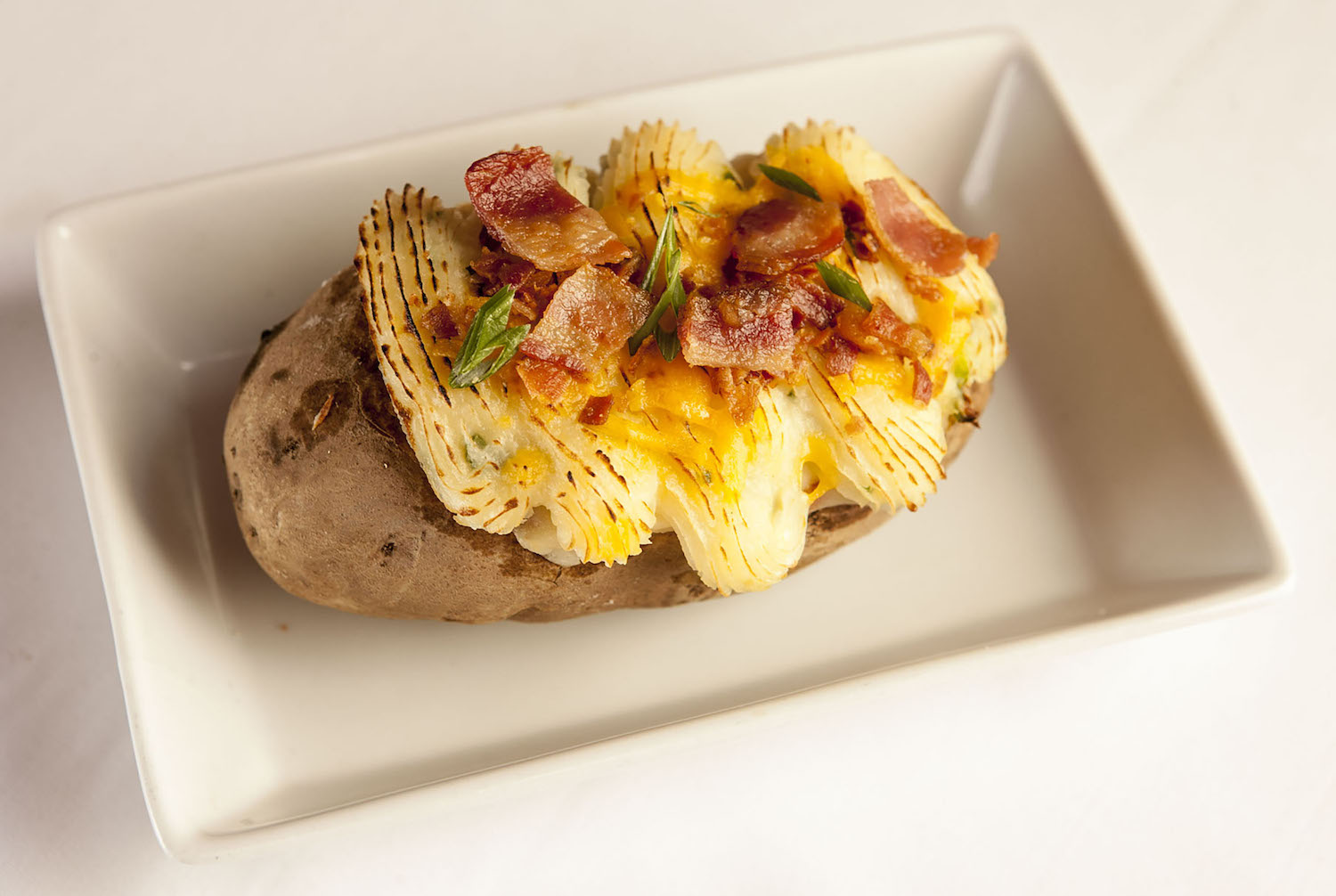
You can imagine the largess in
the dessert department, though I don’t think
either a banana cream pie or Black Forest cake
will win any kudos for originality.
Brunch is a very big, lavish
deal at Redeye Grill, offering everything from
apple-cinnamon pancakes ($21) and a traditional
English breakfast ($24) to Chinese lobster
breakfast ($29) and caviar with poached eggs and
smoked salmon ($35).
Redeye Grill’s wine list is
getting an update and it needs it. All of
this is well orchestrated by affable general
manager Fabien Lepaître (ask him for wine
selections), and maître d’ Carlo Mariani (no
relation).
Redeye Grill is set up for
enjoyment and a giddy sense that you are
definitely in the core of the Big Apple.
Redeye Grill
is open for lunch Mon.-Fri., dinner nightly, and
brunch Sat. & Sun.
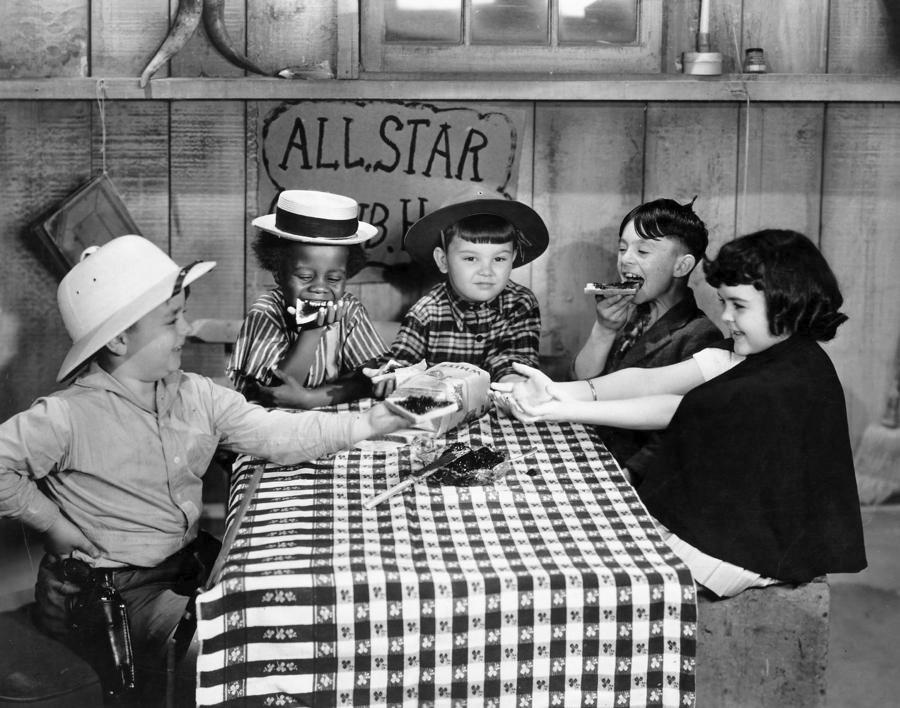
Richard
Moore, owner of the Lobster Pound and Moore restaurant
in Nova Scotia posted a Facebook message that,
“Effective as of now, we will no longer allow small
screaming children.” Immediately
inundated with responses from outraged parents, Moore
deleted the message, explaining, “I chose the wrong
words to convey a message I didn’t want. I love kids
and would have them if I could. I shouldn’t have used
the word ‘screaming’ but should have said something
like, ‘Lil’ diners having a moment.’”
SHE MIGHT HAVE KNOWN SINCE THE

LABEL READ, 'PRESIDENT RONALD REAGAN'S
FAVORITE CHOCOLATE DRINK!"
A 77-year-old
Italian grandmother known as "Mrs. Rosetta" ended up in
the ER alongside her son, her two grandchildren, and one
of their friends after serving them hot chocolate that
she'd purchased in the 1980s. The woman was not
charged with a crime.
Any of John Mariani's books below may be ordered from amazon.com.
 I'm proud and happy to announce that my
new book, The Hound
in Heaven (21st Century Lion Books), has just
been published through Amazon and Kindle.
I'm proud and happy to announce that my
new book, The Hound
in Heaven (21st Century Lion Books), has just
been published through Amazon and Kindle. It is a novella, and for anyone who loves dogs, Christmas, romance, inspiration, even the supernatural, I hope you'll find this to be a treasured favorite. The story concerns how, after a New England teacher, his wife and their two daughters adopt a stray puppy found in their barn in northern Maine, their lives seem full of promise. But when tragedy strikes, their wonderful dog Lazarus and the spirit of Christmas are the only things that may bring back his master back from the edge of despair.
WATCH THE VIDEO!
“What a huge surprise turn this story took! I was completely stunned! I truly enjoyed this book and its message.” – Actress Ali MacGraw
“He had me at Page One. The amount of heart, human insight, soul searching, and deft literary strength that John Mariani pours into this airtight novella is vertigo-inducing. Perhaps ‘wow’ would be the best comment.” – James Dalessandro, author of Bohemian Heart and 1906.
“John Mariani’s Hound in Heaven starts with a well-painted portrayal of an American family, along with the requisite dog. A surprise event flips the action of the novel and captures us for a voyage leading to a hopeful and heart-warming message. A page turning, one sitting read, it’s the perfect antidote for the winter and promotion of holiday celebration.” – Ann Pearlman, author of The Christmas Cookie Club and A Gift for my Sister.
“John Mariani’s concise, achingly beautiful novella pulls a literary rabbit out of a hat – a mash-up of the cosmic and the intimate, the tragic and the heart-warming – a Christmas tale for all ages, and all faiths. Read it to your children, read it to yourself… but read it. Early and often. Highly recommended.” – Jay Bonansinga, New York Times bestselling author of Pinkerton’s War, The Sinking of The Eastland, and The Walking Dead: The Road To Woodbury.
“Amazing things happen when you open your heart to an animal. The Hound in Heaven delivers a powerful story of healing that is forged in the spiritual relationship between a man and his best friend. The book brings a message of hope that can enrich our images of family, love, and loss.” – Dr. Barbara Royal, author of The Royal Treatment.
 |
The Encyclopedia of American Food and Drink by John F. Mariani (Bloomsbury USA, $35) Modesty forbids me to praise my own new book, but let me proudly say that it is an extensive revision of the 4th edition that appeared more than a decade ago, before locavores, molecular cuisine, modernist cuisine, the Food Network and so much more, now included. Word origins have been completely updated, as have per capita consumption and production stats. Most important, for the first time since publication in the 1980s, the book includes more than 100 biographies of Americans who have changed the way we cook, eat and drink -- from Fannie Farmer and Julia Child to Robert Mondavi and Thomas Keller. "This book is amazing! It has entries for everything from `abalone' to `zwieback,' plus more than 500 recipes for classic American dishes and drinks."--Devra First, The Boston Globe. "Much needed in any kitchen library."--Bon Appetit. |
"Eating Italian will never be the same after reading John Mariani's entertaining and savory gastronomical history of the cuisine of Italy and how it won over appetites worldwide. . . . This book is such a tasteful narrative that it will literally make you hungry for Italian food and arouse your appetite for gastronomical history."--Don Oldenburg, USA Today. "Italian
restaurants--some good, some glitzy--far
outnumber their French rivals. Many of
these establishments are zestfully described
in How Italian Food Conquered the World, an
entertaining and fact-filled chronicle by
food-and-wine correspondent John F.
Mariani."--Aram Bakshian Jr., Wall Street
Journal.
"Equal parts
history, sociology, gastronomy, and just
plain fun, How Italian Food Conquered the
World tells the captivating and delicious
story of the (let's face it) everybody's
favorite cuisine with clarity, verve and
more than one surprise."--Colman Andrews,
editorial director of The Daily
Meal.com. "A fantastic and fascinating
read, covering everything from the influence
of Venice's spice trade to the impact of
Italian immigrants in America and the
evolution of alta cucina. This book will
serve as a terrific resource to anyone
interested in the real story of Italian
food."--Mary Ann Esposito, host of PBS-TV's
Ciao
Italia. "John Mariani has written the
definitive history of how Italians won their
way into our hearts, minds, and
stomachs. It's a story of pleasure over
pomp and taste over technique."--Danny Meyer,
owner of NYC restaurants Union Square
Cafe, The Modern, and Maialino.
|
 |
 |
 |
 |
 |
 |
 |
 |
 Everett Potter's Travel Report:
Everett Potter's Travel Report: 
 Eating Las
Vegas is the new on-line site for
Virtual Gourmet contributor John A. Curtas.,
who since 1995 has been commenting on the
Las Vegas food scene and reviewing
restaurants for Nevada Public Radio.
He is also the restaurant critic for KLAS
TV, Channel 8 in Las Vegas, and his past
reviews can be accessed at KNPR.org.
Click on the logo below to go directly to
his site.
Eating Las
Vegas is the new on-line site for
Virtual Gourmet contributor John A. Curtas.,
who since 1995 has been commenting on the
Las Vegas food scene and reviewing
restaurants for Nevada Public Radio.
He is also the restaurant critic for KLAS
TV, Channel 8 in Las Vegas, and his past
reviews can be accessed at KNPR.org.
Click on the logo below to go directly to
his site.

Tennis Resorts Online: A Critical Guide to the World's Best Tennis Resorts and Tennis Camps, published by ROGER COX, who has spent more than two decades writing about tennis travel, including a 17-year stretch for Tennis magazine. He has also written for Arthur Frommer's Budget Travel, New York Magazine, Travel & Leisure, Esquire, Money, USTA Magazine, Men's Journal, and The Robb Report. He has authored two books-The World's Best Tennis Vacations (Stephen Greene Press/Viking Penguin, 1990) and The Best Places to Stay in the Rockies (Houghton Mifflin, 1992 & 1994), and the Melbourne (Australia) chapter to the Wall Street Journal Business Guide to Cities of the Pacific Rim (Fodor's Travel Guides, 1991).


MARIANI'S VIRTUAL GOURMET
NEWSLETTER is published weekly. Editor/Publisher: John
Mariani.
Editor: Walter Bagley. Contributing Writers: Christopher Mariani,
Robert Mariani, Misha
Mariani,
John A. Curtas, Edward Brivio, Mort Hochstein,
Andrew Chalk, Dotty Griffith and Brian Freedman. Contributing
Photographers: Galina Dargery, Bobby
Pirillo. Technical Advisor: Gerry McLoughlin.
To un-subscribe from this newsletter,click here.
© copyright John Mariani 2015

